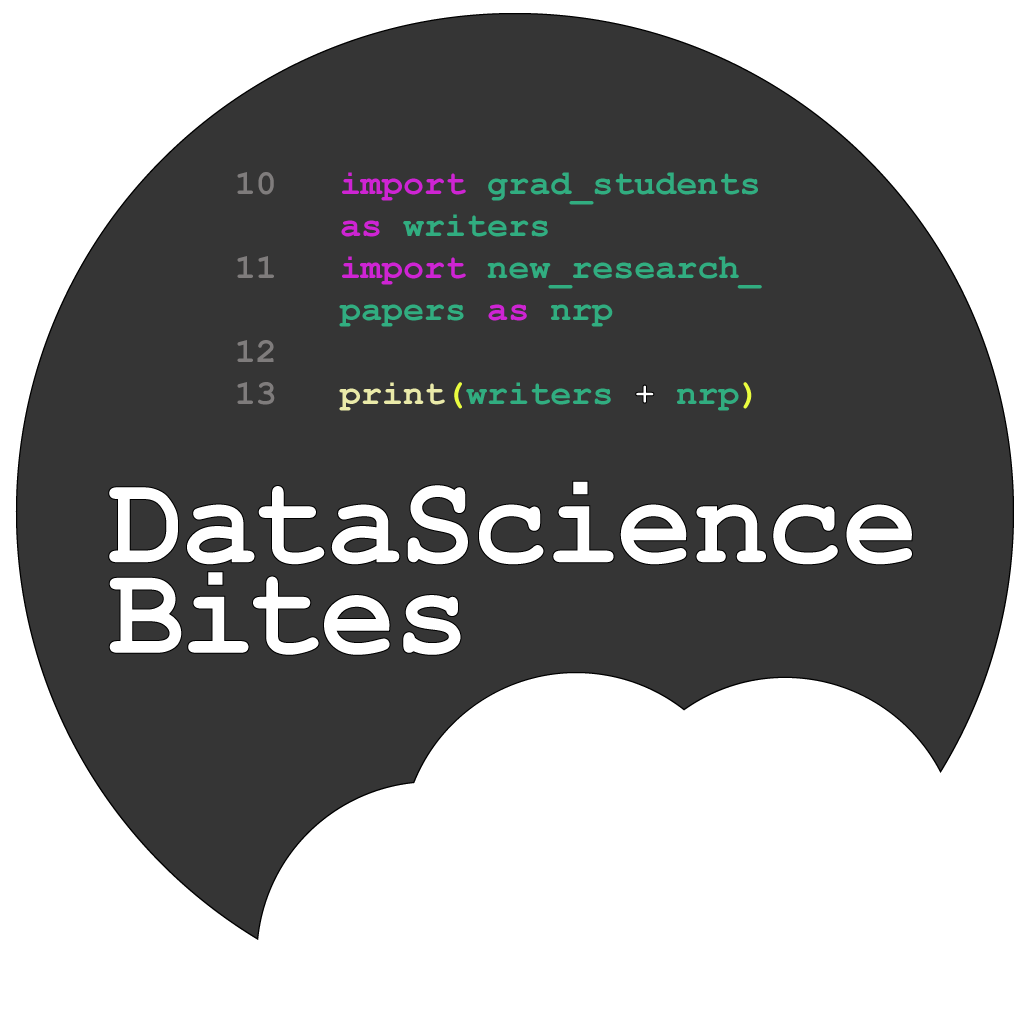Our DataScienceBites blog publishes digestible, engaging summaries of interesting new pre-print and peer-reviewed publications in the data science space. Our goal is to make scientific papers more widely accessible.
Posts are targeted at undergraduate level. Each presents a non-technical overview of a new research paper and its key findings, potential applications, and implications.
We welcome contributions from graduate students and early career researchers in data science (or related subjects) at universities throughout the world, as well as industry researchers. Contributors must have a passion for science communication and a drive to explain, clarify and demystify.

Basic structure of a Bites post
- Information box
- Give the full title of the paper you are discussing, the name(s) of its author(s) and year of publication. Say where the paper is published, whether it is a pre-print or peer-reviewed publication, whether it is open access or not, and include links to authorised HTML and/or PDF versions.
- Introduction and background
- Ease readers into the paper you are writing about, and help them to see why it is worth their attention. Sometimes a paper is sufficiently ground breaking to be attention grabbing in its own right. But more often than not you will have to find a way to “hook” people in. When writing about data science tools and methods, for example, it can be helpful to start by outlining a typical application scenario or use case. Readers may be more familiar with the use case than the tool, so this provides valuable framing within which you can talk about the shortcomings of existing methods and the advances promised by the new research. Ultimately, you want to get readers to the point where they understand the problem, question or challenge that this new research paper aims to solve.
- Research overview
- Here is where you summarise the work done by the paper’s authors. Remember to keep the discussion non-technical and jargon-free, and explain important terms and concepts as necessary. Be careful not to oversimplify!
- Takeaways and implications
- Put this paper and its contributions into the appropriate context for readers. Does it make modest but important improvements to existing knowledge or research processes? Will it help others to address new questions, issues and challenges? What further work is needed to build on these advances?
- Further reading
- Readers may wish to learn more about the research or the broader subject matter, so feel free to point them to additional resources: videos, podcasts, textbooks, conference presentations, etc.
Word count target
500–1,000 words.
Two ways of contributing
Regular contributors commit to publishing an agreed number of posts (6–12) each year. Regular contributors will collaborate closely with editors on the development of the blog, and experienced contributors will be invited to support and mentor new regular contributors to help grow the DataScienceBites team.
Guest contributors make one-off or ad hoc contributions to the site. Proposals are to be submitted in the form of a content brief.
Next steps
If you are interested in contributing to DataScienceBites:
Identify a new data science publication that you are interested in writing about.
Review the blog index to make sure we haven’t already covered this publication.
Decide whether you would like to be a regular contributor or guest contributor.
Contact Real World Data Science to discuss.
DataScienceBites contributors are not permitted to write about their own research papers.
If contributors are in any way affiliated with the authors of papers they write about, this must be disclosed as part of their submission.
About the ScienceBites family
DataScienceBites is published by Real World Data Science and is part of the ScienceBites galaxy of sites. See sciencebites.org for an overview of the ScienceBites mission.